- 1 2 Petersen 1971, pp. 64.
- 1 2 3 4 5 6 7 8 9 "Civic Leader Gave Special Touch to City". The New Zealand Herald . 23 August 1983. p. 2.
- ↑ "About Ambler". Ambler & Company. Retrieved 21 October 2018.
- ↑ "Ambler & Co". New Zealand Fashion Museum. Retrieved 21 October 2018.
- ↑ "Electoral". The New Zealand Herald . Vol. LXXVIII, no. 23973. 24 May 1941. p. 3. Retrieved 20 November 2017.
- ↑ "Declaration of Poll". The New Zealand Herald . 21 October 1954. p. 6.
- 1 2 Bush 1971, pp. 585.
- ↑ Petersen 1971, pp. 64–5.
- ↑ Edgar 2012.
- ↑ "No. 40962". The London Gazette (Supplement). 1 January 1957. pp. 45–47.
Related Research Articles

Sir Dove-Myer Robinson was Mayor of Auckland City from 1959 to 1965 and from 1968 to 1980, the longest tenure of any holder of the office. He was a colourful character and became affectionately known across New Zealand as "Robbie". He was one of several Jewish mayors of Auckland, although he rejected Judaism as a teenager and became a lifelong atheist. He has been described as a "slight, bespectacled man whose tiny stature was offset by a booming voice and massive ego".

Parnell is a suburb of Auckland, New Zealand. It is one of New Zealand's most affluent suburbs, consistently ranked within the top three wealthiest, and is often billed as Auckland's "oldest suburb" since it dates from the earliest days of the European settlement of Auckland in 1841. It is characterised by its mix of tree lined streets with large estates; redeveloped industrial zones with Edwardian town houses and 1920s bay villas; and its hilly topography that allows for views of the port, the Waitematā Harbour, Rangitoto Island and the Auckland Domain. To its west lies the Auckland Domain, to the south Newmarket, and to the north the Ports of Auckland.

Frederick William Schramm was a New Zealand politician of the Labour Party. He was the eleventh Speaker of the House of Representatives, from 1944 to 1946.
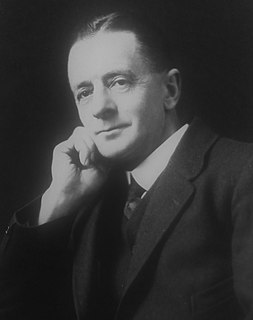
Frederick Notley (Fred) Bartram was a New Zealand Member of Parliament for Grey Lynn in Auckland.

William Theophilus Anderton was a New Zealand politician of the Labour Party. He served as Minister of Internal Affairs in the second Labour Government, from 1957 to 1960.
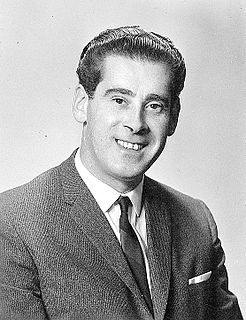
John Gerald O’Brien, known as Gerald O'Brien, was a New Zealand politician of the Labour Party.
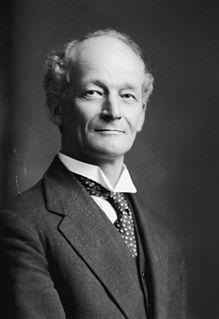
Thomas Bloodworth was a New Zealand politician. He was a Member of the Legislative Council and its last Chairman of Committees.
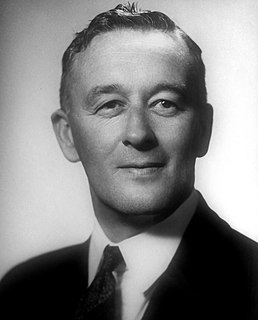
Joseph Bernard Francis Cotterill was a New Zealand trade unionist, sport administrator and politician of the Labour Party.

Sir John Andrew Charles Allum was a New Zealand businessman and engineer, and was Mayor of Auckland City from 1941 to 1953.

Sir James Bell Donald was a United Party Member of Parliament and Cabinet Minister in Auckland, New Zealand.
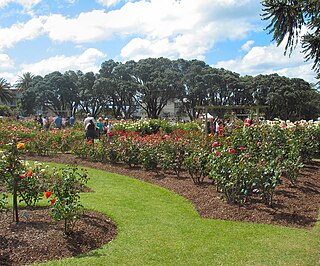
Dove-Myer Robinson Park, more commonly known as the Parnell Rose Garden, is a park in Parnell, Auckland, New Zealand. The park is named after Dove-Myer Robinson, the longest-serving mayor of Auckland, who served for 18 years. There are over 5,000 roses in the garden. Some of the plants in the garden have been bred by internationally celebrated rose breeders.

Peter Dignan was the fifteenth Mayor of Auckland who held the office in 1897 and 1898. He was the first New Zealand-born and probably the first Catholic occupant of the position.

The United Independents were a centrist oriented local body electoral ticket in Auckland, New Zealand. The group was formed in 1953 by combining a selection process for council candidates backed by several civic interest groups and lobby groups opposed to a proposed sewerage scheme. Its main ambition was to control the balance of power on the Auckland City Council and stop the sewerage scheme.
The 1957 New Year Honours in New Zealand were appointments by Elizabeth II on the advice of the New Zealand government to various orders and honours to reward and highlight good works by New Zealanders. The awards celebrated the passing of 1956 and the beginning of 1957, and were announced on 1 January 1957.

Eric Cameron Armishaw was a New Zealand local-body politician and boxing referee.

Sir Joseph George Davidson Ward, 3rd Baronet was a New Zealand fencer and fencing administrator who represented his country at the 1950 British Empire Games. He was active in public life in Christchurch from the 1930s until his death, and served as the honorary consul for Belgium in that city for 30 years.

Alfred Onslow Glasse was a New Zealand electrical engineer and local-body politician. He was chief engineer of the Auckland Electric Power Board for 29 years, and served as president of the New Zealand Institution of Engineers in 1942–43. Glasse was later elected as an Auckland City Councillor, and was deputy mayor from 1962 to 1970.
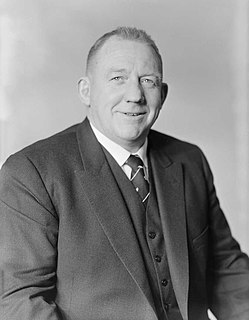
Thomas Henry Pearce was a New Zealand politician, rugby union player and businessman. He was chairman of the Auckland Regional Authority for 8 years. A controversial figure, he was known for his blunt, often fiery personality speaking forthrightly and not standing on ceremony.
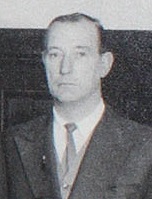
George Frederick Harry Forsyth was a New Zealand trade unionist and politician.
Rendell Ian McIntosh is a New Zealand historian and former track athlete. He won three national athletics championship titles and represented his country at the 1974 British Commonwealth Games in the 400 metres hurdles. He later instigated the running of the Auckland Marathon across the Auckland Harbour Bridge, and became the manager of the historic house Alberton in the Auckland suburb of Mount Albert.
References
- Bush, Graham W. A. (1971). Decently and in Order: The Government of the City of Auckland 1840–1971. Auckland: Collins.
- Edgar, John (2012). Urban Legend: Sir Dove-Meyer Robinson. Hodder Moa.
- Petersen, George Conrad (1971). Who's Who in New Zealand, 1971 (10th ed.). Wellington: A.H & A.W. Reed.
Fred Ambler | |
|---|---|
 | |
| 13th Deputy Mayor of Auckland | |
| In office 1957–1962 |